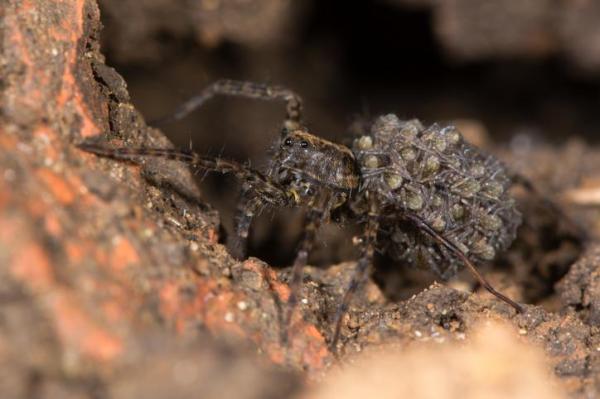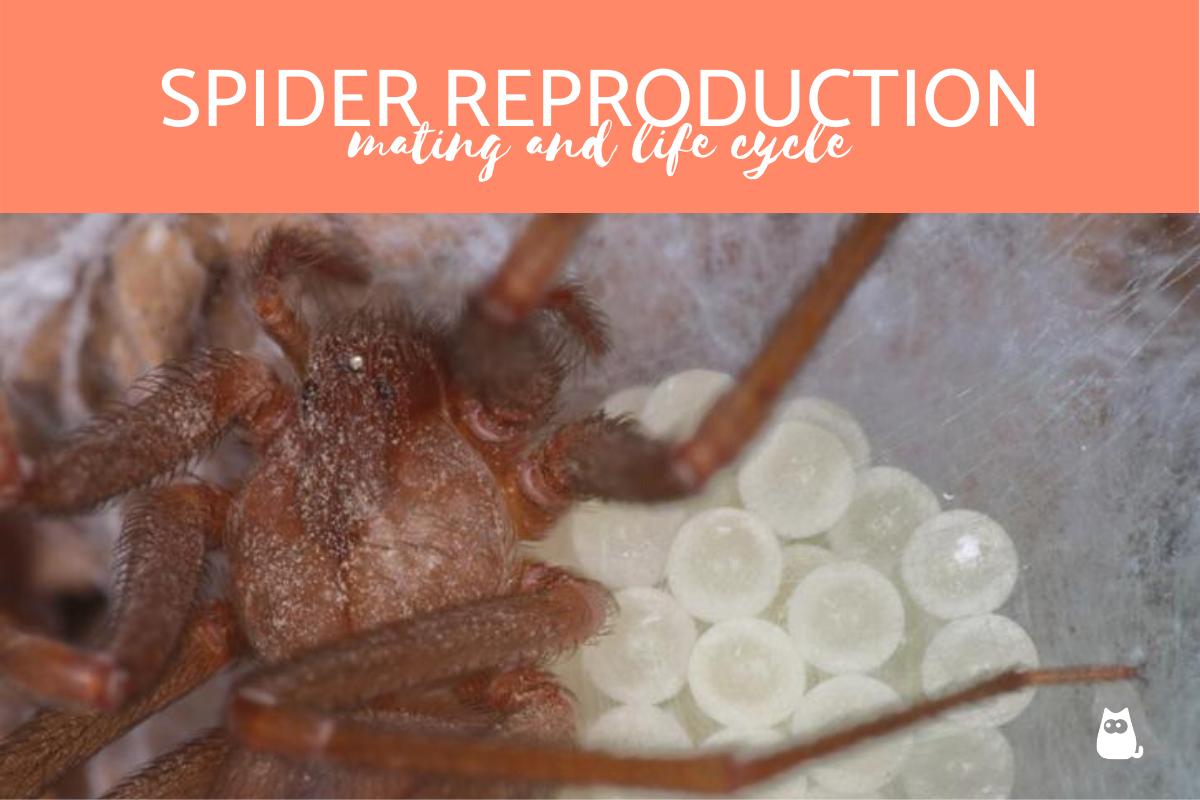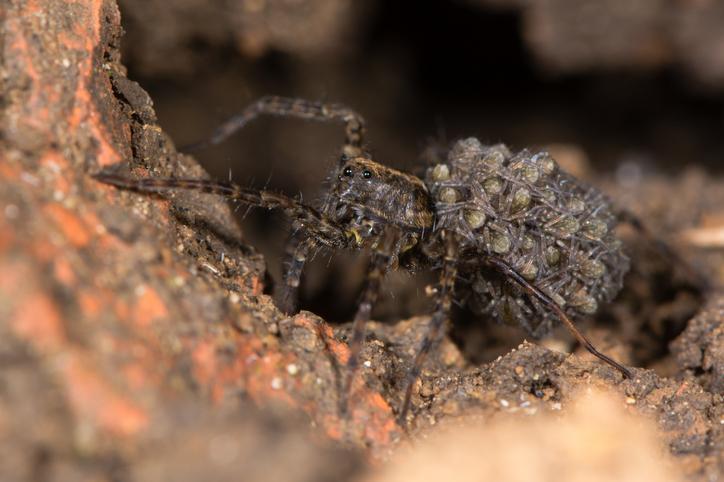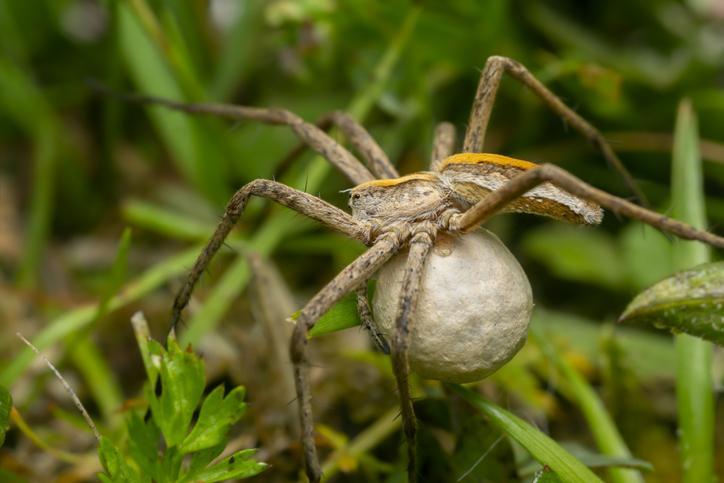How Do Spiders Reproduce?


Spiders are arachnid arthropods, meaning that they are related to mites, scorpions and opiliones. This is one of the most diverse orders in the animal kingdom with more than 45,000 known species and 114 families. Arachnids have a very interesting reproduction process that involves sexual dimorphism, cannibalism and communication between the male and female.
In this AnimalWised article we're going to take about how spiders reproduce, as well as talk about how they court, how long it takes for their eggs to hatch and more.
Characteristics of spiders
Before we know how spiders reproduce, we need should cover their basic characteristics. All of them have a series of characters that differentiate them from other arthropods. These are the main characteristics of spiders:
- Terrestrial: all phases of the a spider's life are terrestrial. There are few exceptions of spiders that spend a lot of time in the water, such as the European water spider (Argyroneta aquatica).
- Arachnids: spiders, like the rest of arachnids, have 8 legs. This is a characteristic that differentiates them from the rest of arthropods.
- Segmentation: Their body is divided into two parts. The first part, where their "head" is located, is known as a cephalothorax. It is followed by the second segment, the abdomen.
- Rows: spiders present some structures known as rows on their abdomen. Through them they emit silk threads that they use for various purposes, such as building spider webs, transporting or protecting their spawn.
- Pedipalps: are appendages similar to the legs, although they are raised and in front of the body. They are usually larger in males, who use them during courtship and also as a copulatory device. It is a very important feature to understand how spiders reproduce.
- Chelicerae: is the mouth part, often referred to as “jaws”. They use them to inoculate venom into their prey.
- Carnivorous: spiders feed by sucking the internal fluids of other arthropods, especially insects. Many of them supplement their diet with nectar or other plant food sources. There is only one herbivorous species known to us (Bagheera kiplingi).
- Predators: these arachnids are quite voracious predators. To get their food, they have very diverse hunting strategies: nets, traps, camouflage, etc.
- Poison: after trapping their prey, they inoculate toxic substances to paralyze or kill it. In addition, the poison may contain substances that dissolve the tissues of prey. In this way, they are converted into liquids and subsequently sucked. An exception is the Uloboridae family that lacks venom glands.
How spiders court for mating
We already know these interesting animals very well, but how do spiders reproduce? The reproduction of spiders is sexual, in other words, a female and a male must unite and form an embryo. For this reason, there are males and females that must copulate for new spiders to be born.
Before that, they must choose their sexual partner through courtship. This couple is only momentary, since both males and females mate with several individuals in the same reproductive season. After copulation, females lay tens or even thousands of eggs, depending on the species and weather conditions.
Spiders are therefore oviparous animals. In most of the species we can also observe parental care. The female tends to take care of the eggs and, sometimes, also of the young.
Courtship of spiders
Sexual dimorphism appears in many spider species. For spiders, females are often much larger than males. In active predators, however, females and males are similar in size, although differences in color may appear.
Before copulation, both congeners must be sure that they are the ideal partner. For this, they usually perform a series of wedding rituals. In some species, the male performs a courtship dance to attract the female's attention. This is the case of the “peacock spiders” (Maratus spp.). These males raise their third pair of legs and vibrate their bodies while displaying their colorful drawings.
Another strategy to win over females is to give them a bridal gift. For example, males of Pisaura mirabilis wrap insects in silk and offer them to females. Sometimes they try to trick them by offering females an inedible item. If the female realises that it's a trick they can decide not to mate.
Lastly, communication through sounds or stridulations has been documented in many spiders. Some males bump their limbs against each other or against the ground, emitting a type of “song”. These sounds are usually not audible to humans.

How spiders reproduce
Intercourse is the most important process in understanding how spiders reproduce. Once the female decides that a male is suitable, he grabs her by the chelicerae using forceps on the pedipalps. Then he lifts her onto him and can access her genital pore. He introduces his sperm with his copulatory organ, which is also found in the pedipalps. This information is indicative, since the posture adopted during copulation varies in each species.
The introduction of the copulatory organ is repeated several times. The longer the sexual intercourse lasts, the more chanced the male will have to be a father. This is because females can copulate with multiple males, storing everyone's sperm in their reproductive system. Therefore, the order of the males is not as important as the amount of sperm that each one is capable of providing.
During intercourse, females usually make sounds or stridulations. Their role is believed to be to increase or decrease the male's sexual activity. Thus, the males that better get along with the females could obtain a greater number of fertilized eggs. This occurs, for example, in the cellar spider (Physocyclus globosus).
Another behavior that usually appears before or after intercourse is sexual cannibalism. Although rare, in some species the female will eat the male. This behavior appears in species with sexual dimorphism. In some of these species, they have learned to defend themselves against cannibalism. This is the case of the males of the nursery spider (Pisaurina mira), which wrap the females in silk before copulation.
Breeding time of spiders
The breeding season of spiders depends on the climatic conditions of the place where they live. In places where there is a cold and a warm season, spiders breed in spring or summer. In early spring they reach sexual maturity, begin to secrete pheromones and search for one or more partners. It is not until late spring or early summer when they lay. This way, spiders go through winter in a juvenile or adult state, depending on the species.
In tropical climates, where the cold does not limit spider reproduction, they can lay eggs several times a year. In these cases, they usually complete their life cycle in just a few months. However, there are many exceptions, since the reproduction of spiders is influenced by very different factors. Some reproduce in the fall, and others lay eggs every 2-3 years.
How do spiders lay eggs?
A few days or even several weeks after copulation, the females lay the eggs. To do this, they cover the spawn with a silk cocoon and choose a very protected place to leave it. Subsequently, many mothers watch over and protect their eggs until they hatch. Other species prefer to carry the cocoon over their body. This way, they prevent other animals from preying on them. An example of a spider that chooses to carry their spawn is the Pisarua mirabilis.
Many females do not lay all the eggs at once, but instead make several layings on different days. Some species wait for the eggs from the first spawn to hatch before the second one is hatched. In this way, they can take care of all their eggs. So, how many eggs do spiders lay? They can lay tens or thousands of eggs, depending on the species, habitat and mates.

How are spiders born?
All the eggs in the clutch hatch at the same time. They are small spider mites very similar to their parents. Therefore, spiders do not have larvae and do not undergo metamorphosis, so their development is direct.
Often spiders or nymph pups stay together for a time. When they learn to hunt, they separate from their siblings and begin to disperse thanks to the wind. Normally, they climb high and form a very long silk thread that will be carried by the wind for miles. Thanks to this strategy, these small animals have been able to reach all corners of the world.
In very few species, spider mites can remain in the nest for up to 40 days. It is because, during this time, their mothers take care of them. In fact, it has been documented that in some spiders the females even feed their young. This is the case of the jumping spider (Toxeus magnus), which deposits nutritious droplets next to their nymphs. The droplets are a liquid that she produces herself, which is why it has been compared to the milk of mammals.
How long does it take for spider eggs to hatch?
The time it takes for the eggs to hatch depends on each species. It is also influenced by other factors, such as the weather or specific temperature. In some species, eggs hatch when conditions are right. This can happen in as little as 1 week. In other cases they are delayed and can hatch up to 4 months after laying.
If you enjoyed this spider article, you may also be interested in our article about the most venomous spider in the world.
If you want to read similar articles to How Do Spiders Reproduce?, we recommend you visit our Facts about the animal kingdom category.
- Albo, MJ, Winther, G., Tuni, C., Toft, S., & Bilde, T. (2011). Worthless donations: male deception and female counter play in a nuptial gift-giving spider . BMC Evolutionary Biology , 11 (1), 329.
- Anderson, AG, & Hebets, EA (2016). Benefits of size dimorphism and copulatory silk wrapping in the sexually cannibalistic nursery web spider, Pisaurina mira . Biology letters, 12 (2), 20150957.
- Chen, Z., Corlett, RT, Jiao, X., Liu, SJ, Charles-Dominique, T., Zhang, S., ... & Quan, RC (2018). Prolonged milk provisioning in a jumping spider . Science, 362 (6418), 1052-1055.
- Melic, A., Barrientos, JA, Morano, E. & Urones C. (GIA-SEA) (2). Arachnida class. Araneae Order . IDE @ -SEA Magazine, 11: 1-13.
- Peretti, A., Eberhard, WG, & Briceño, RD (2006). Copulatory dialogue: female spiders sing during copulation to influence male genitalic movements . Animal Behavior, 72 (2), 413-421.







